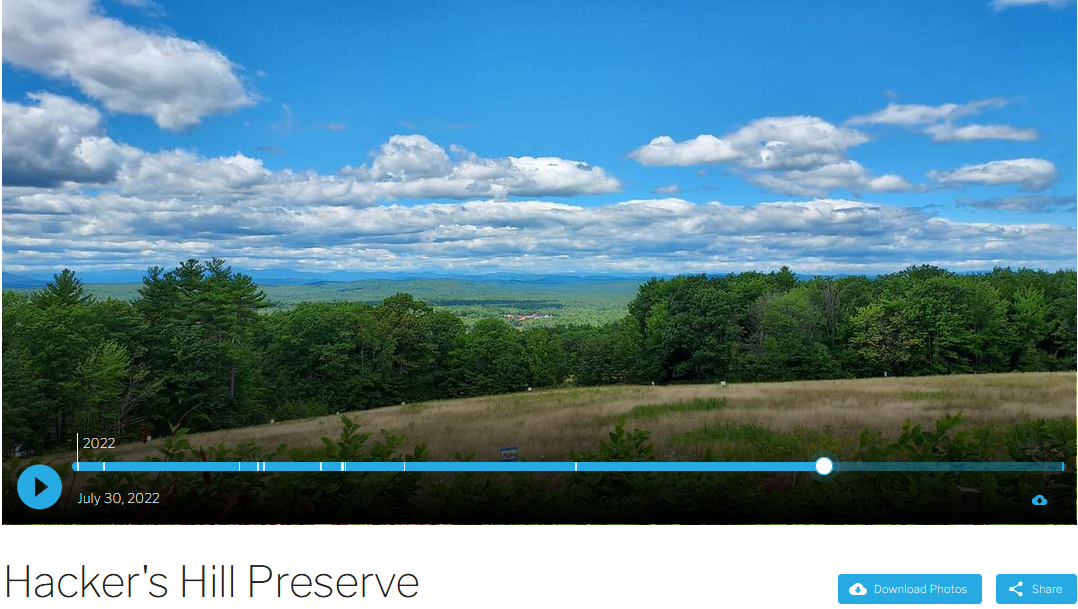Loon Echo Land Trust (LELT) has been working with EcoConservation Services, LLC to control japanese knotweed (scientific name: Fallopia japonica) at Hacker’s Hill Preserve. Cheri Brunault, has been working closely with LELT on this dense knotweed stand (about 0.15 acres), attempting to reduce the stand’s vigor. LELT also partnered with the Southern Maine Conservation Collaborative to install a Climate Change Observatory post that will help monitor this restoration project and document the changes occurring of time.
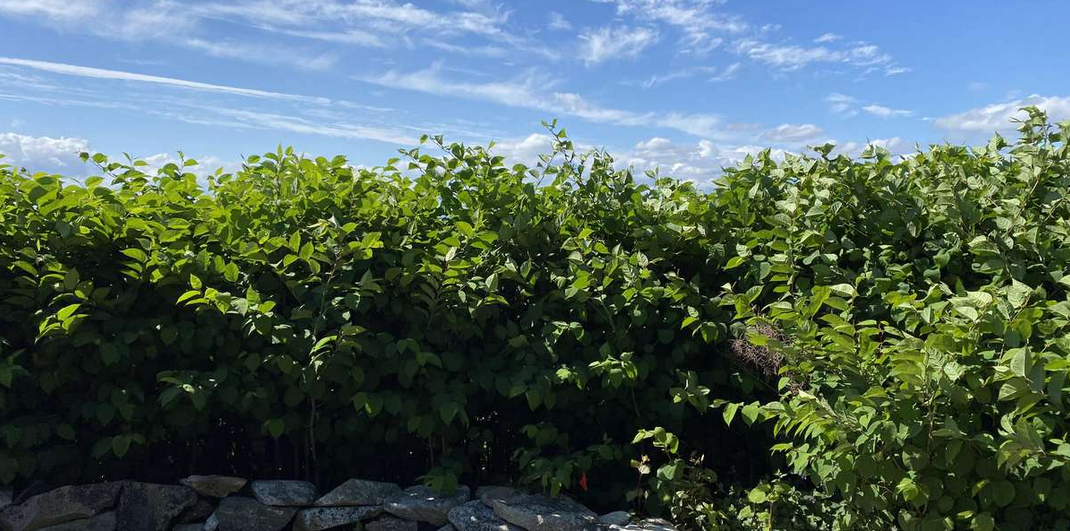
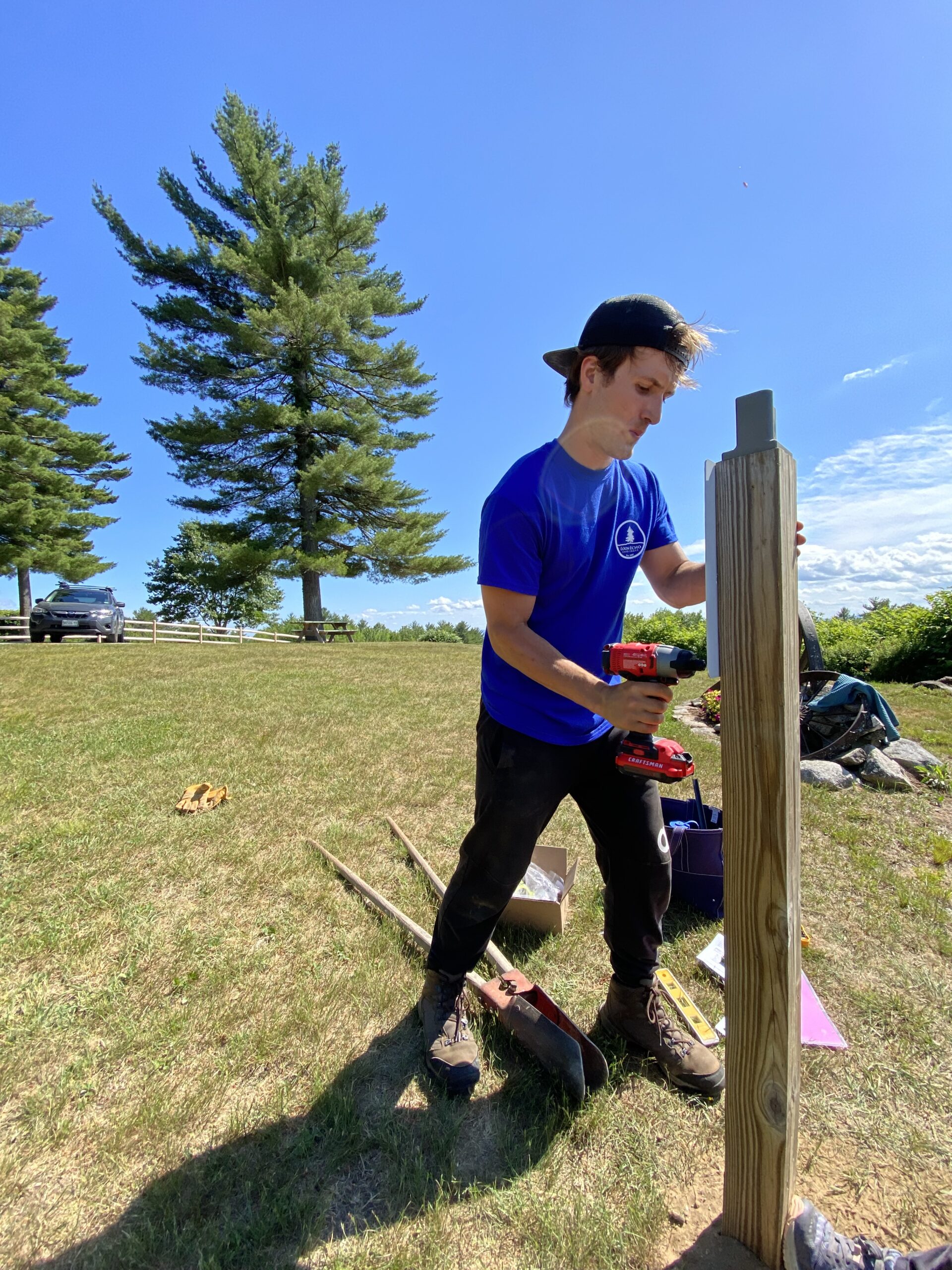
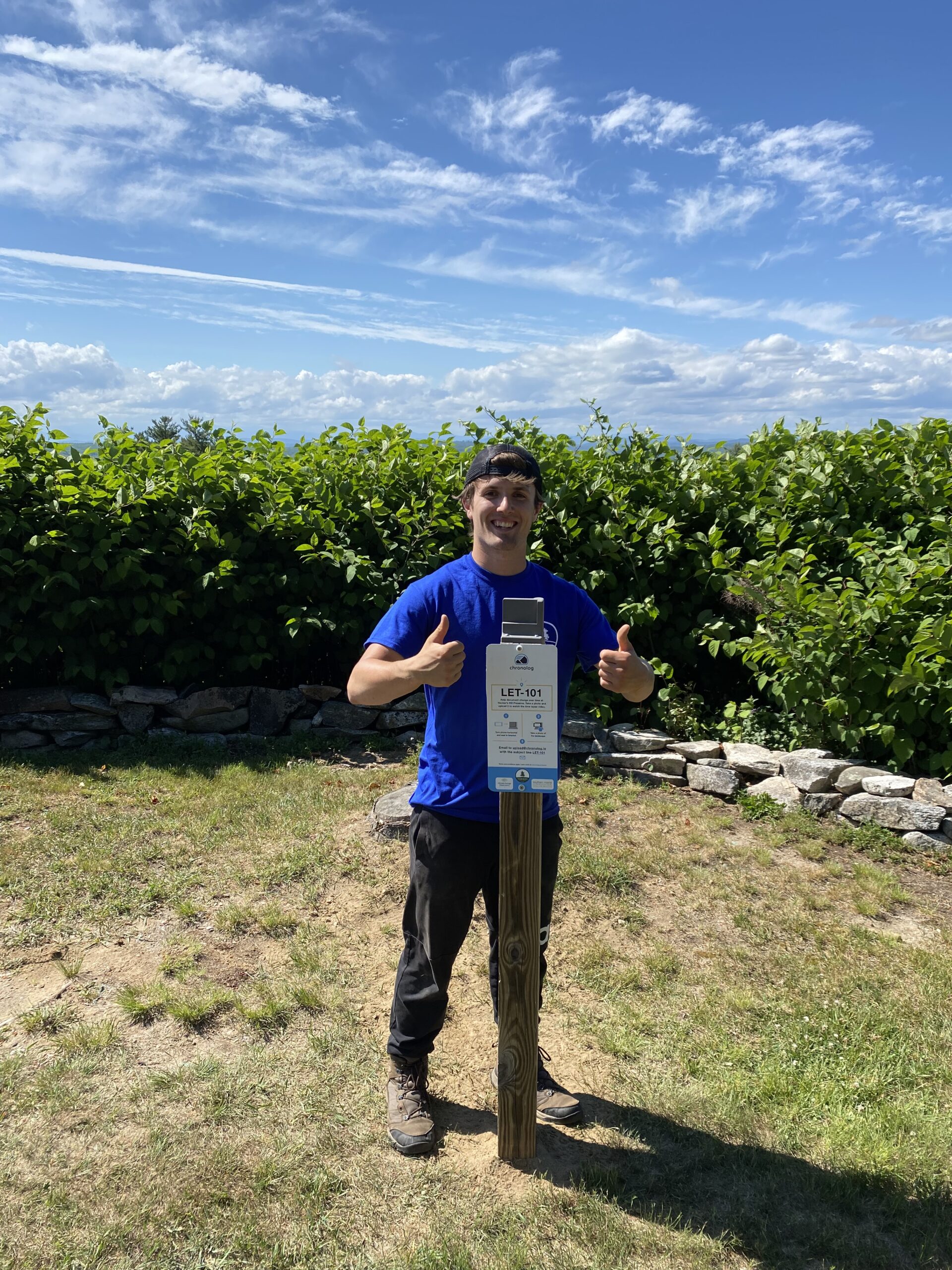
“Eventually the goal would be to eradicate this invasive species from the site, but that could take up to 5 years. The first step was to cut most of the stand, which stood about 10 feet tall. When the regrowth is 3-4 ft tall, a careful herbicide treatment will be applied only to the knotweed.
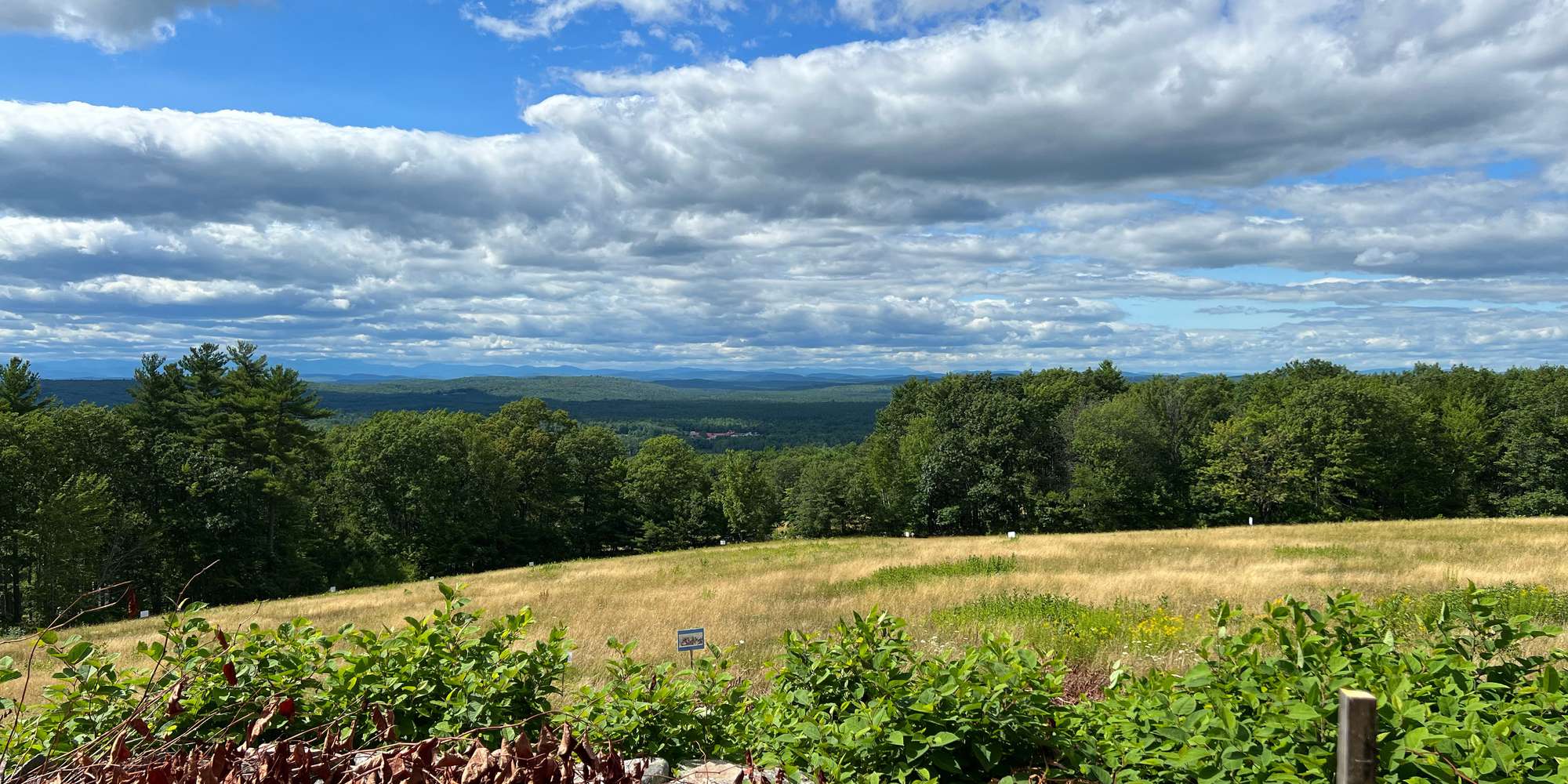
Just out of sight to the left of the Climate Change Observatory post, part of the stand was left upright, and we intend to treat that area with stem injection treatment (knotweed stems are hollow). We would like to see whether the cut-regrow-treat method or the injection method is more effective. Whichever treatment regime is most effective will be used again in subsequent years.
If treatments are effective, the Climate Change Observatory time lapse will capture the tops of knotweed plants from time to time, as we will let it re-grow before treating again. In time, we hope that the area will be free of knotweed and native plants can be established. These will probably be low-growing plants like grasses, american fly honeysuckle, and grassland flowers that can persist in tough conditions and keep invading plants out.” — Cheri Brunault
